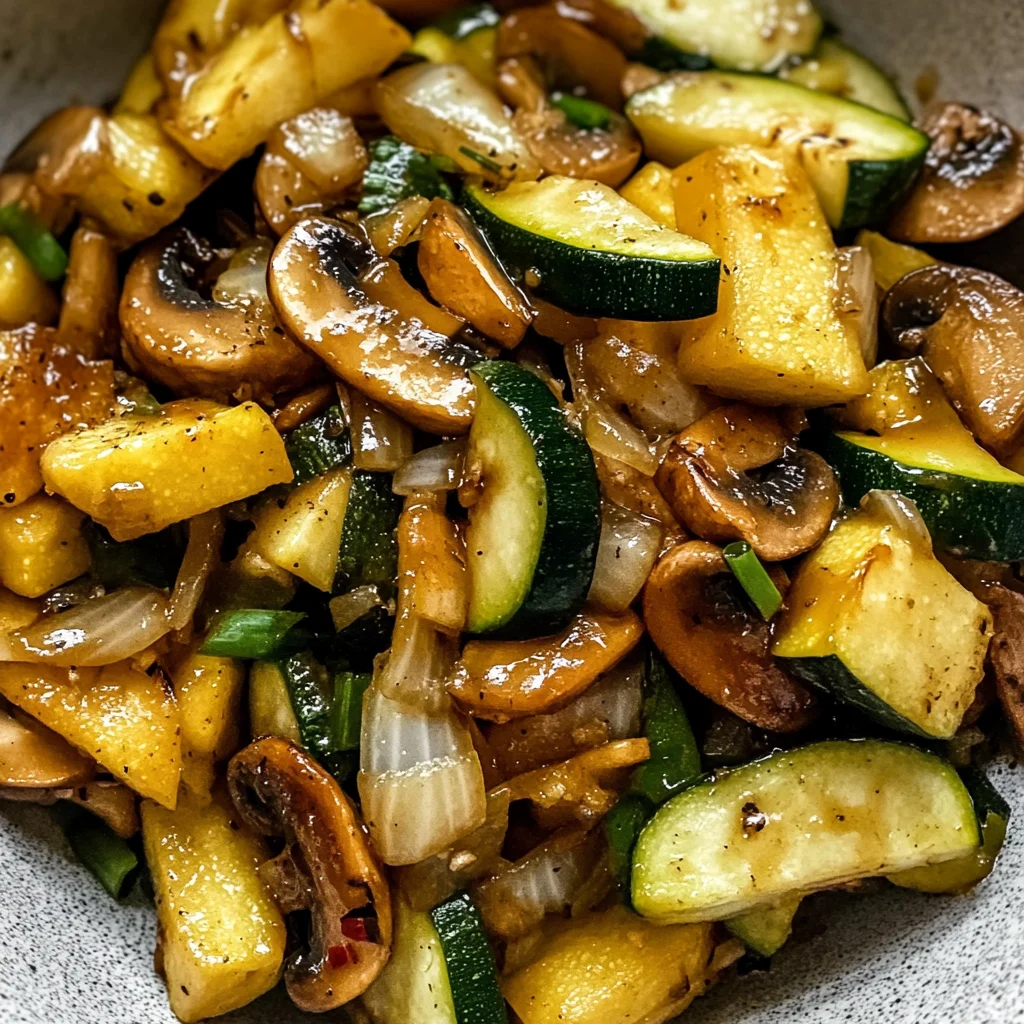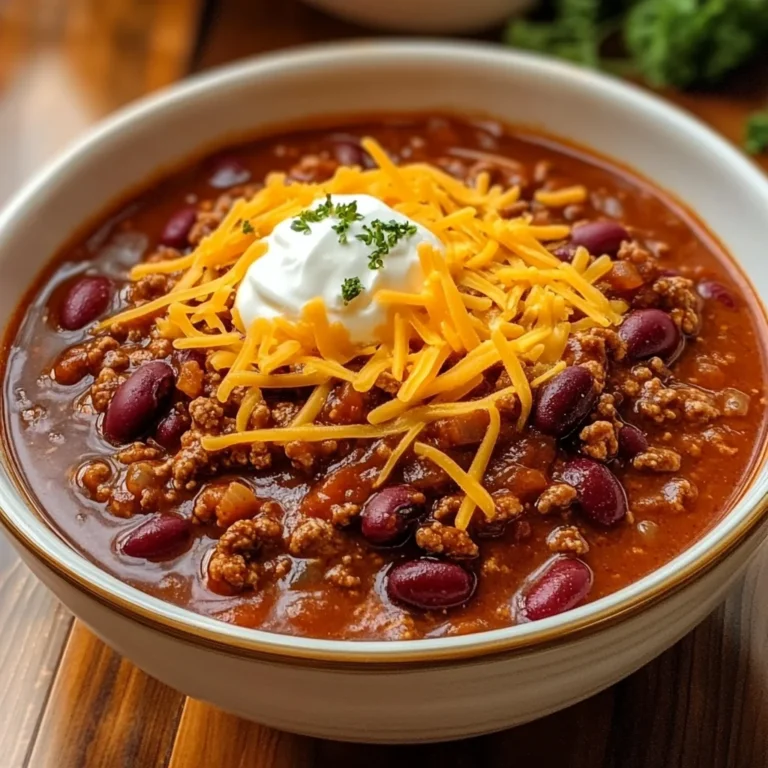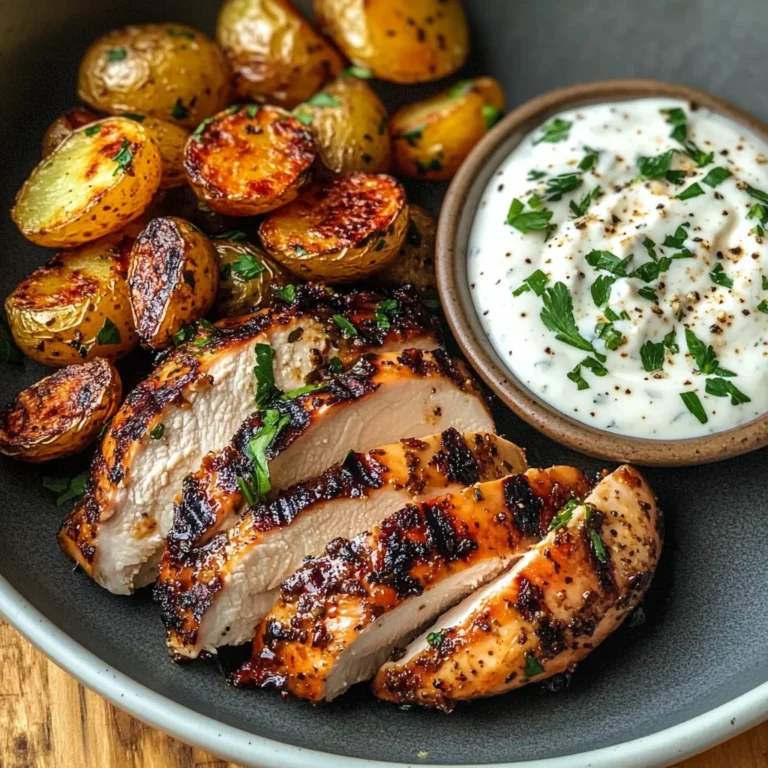Hibachi Vegetables
Hibachi Vegetables are a delightful and colorful side dish that brings the flavors of Japanese cuisine right to your home. This recipe showcases fresh ingredients like zucchini, yellow squash, mushrooms, and onions, all cooked to perfection. Ideal for family dinners, gatherings, or meal prep, these hibachi-style vegetables are not only quick to prepare but also bursting with flavor that everyone will enjoy.
Why You’ll Love This Recipe
- Quick and Easy: You can whip up this dish in just 30 minutes, making it perfect for busy weeknights.
- Flavorful and Fresh: The combination of veggies and seasoning creates a delicious taste that rivals your favorite hibachi restaurant.
- Versatile Side Dish: These vegetables pair well with a variety of main dishes, from grilled meats to rice bowls.
- Healthy Option: Packed with nutrients and low in calories, Hibachi Vegetables make a guilt-free addition to any meal.
- Customizable: Feel free to add or substitute your favorite vegetables for a unique twist!

Tools and Preparation
To prepare these vibrant Hibachi Vegetables, you’ll need a few essential tools. Having the right equipment helps ensure a seamless cooking experience.
Essential Tools and Equipment
- Wok or large skillet
- Cutting board
- Chef’s knife
- Measuring spoons
- Spatula
Importance of Each Tool
- Wok or large skillet: Allows for high-heat cooking and even sautéing of vegetables.
- Chef’s knife: Essential for precise cutting of various veggies, ensuring uniform cooking.
- Spatula: Helps stir-fry the ingredients efficiently without damaging them.
Ingredients
Hibachi Vegetables are made with fresh yellow squash, zucchini, mushrooms, and onions. It is the same Japanese style restaurant version in the comfort of your own home.
For the Base
- 1 tablespoon butter
- 2 tablespoons vegetable oil or olive oil
- 1 cup onion, quartered and thinly sliced
For the Main Vegetables
- 2 cups zucchini, cut into strips
- 2 cups yellow squash, cut into strips
- 1 cup mushrooms, sliced
Seasoning
- 2 teaspoons soy sauce
- 1/4 teaspoon salt
- 1/4 teaspoon ground black pepper
How to Make Hibachi Vegetables
Step 1: Heat the Pan
Begin by heating your wok or large skillet over medium-high heat. Add the 1 tablespoon butter. Once it melts completely, introduce 2 tablespoons of oil.
Step 2: Sauté Onions
Add in the 1 cup sliced onion. Sauté for about 2 minutes until they start to soften and turn translucent.
Step 3: Add Vegetables
Next, add in your prepared 2 cups zucchini, 2 cups yellow squash, and 1 cup mushrooms. Stir well to combine all ingredients.
Step 4: Season the Mix
Now it’s time to enhance the flavors. Add in 2 teaspoons soy sauce along with 1/4 teaspoon salt and 1/4 teaspoon ground black pepper. Continue cooking while stirring frequently until the vegetables reach your desired softness; this should take about 10 minutes.
Step 5: Serve and Enjoy
Serve these warm Hibachi Vegetables alongside hibachi-style fried rice and yum yum sauce. If you have leftovers, store them in an airtight container in the refrigerator for up to 3 days. Enjoy!
How to Serve Hibachi Vegetables
Hibachi Vegetables are a delightful addition to any meal. They can be served alongside various dishes or enjoyed on their own. Here are some creative serving suggestions that will elevate your dining experience.
With Fried Rice
- Fried rice pairs perfectly with Hibachi Vegetables, adding a savory element that complements the freshness of the veggies.
As a Topping for Noodles
- Use Hibachi Vegetables as a vibrant topping for stir-fried noodles. The combination offers a satisfying and colorful dish.
Alongside Grilled Proteins
- Serve your Hibachi Vegetables with grilled chicken, shrimp, or steak for a complete hibachi-style meal. The veggies add balance and flavor.
In a Wrap
- Create a delicious vegetable wrap using tortillas and your Hibachi Vegetables. Add some sauce for extra flavor and enjoy a healthy lunch option.
With Dipping Sauces
- Serve Hibachi Vegetables with yum yum sauce or soy sauce for dipping. This adds an interactive element to your meal, perfect for sharing.
How to Perfect Hibachi Vegetables
To achieve the best results when preparing Hibachi Vegetables, consider these helpful tips.
- Use Fresh Ingredients: Fresh produce enhances flavor and texture, making your dish more enjoyable.
- Cut Evenly: Ensure all vegetables are cut into similar sizes for even cooking. This prevents some from overcooking while others remain crunchy.
- High Heat is Key: Cooking at medium-high heat helps achieve that signature charred effect typical in hibachi dishes.
- Don’t Overcrowd the Pan: Cook in batches if necessary. Overcrowding can lead to steaming instead of sautéing, affecting the final texture.
- Season at the Right Time: Add soy sauce and spices toward the end of cooking. This retains their flavors and prevents burning.
- Experiment with Variations: Feel free to include additional vegetables like bell peppers or carrots for added color and nutrients.
Best Side Dishes for Hibachi Vegetables
When serving Hibachi Vegetables, pairing them with complementary side dishes can create an unforgettable meal. Here are some excellent options:
- Fried Rice: A classic choice combining rice with vegetables and proteins for a hearty side.
- Miso Soup: A warm, comforting soup that balances the richness of hibachi dishes and adds depth to your meal.
- Seaweed Salad: Light and refreshing, this salad offers a nice contrast to the warm vegetables.
- Tempura Vegetables: Crispy tempura adds texture and flavor diversity, enhancing your dining experience.
- Sushi Rolls: Pairing sushi rolls filled with fresh ingredients brings an authentic Japanese touch to your table.
- Edamame: Steamed edamame sprinkled with sea salt provides a nutritious and satisfying snack alongside your meal.
- Pickled Ginger: This tangy condiment cleanses the palate between bites and complements the flavors of hibachi cuisine.
- Grilled Corn on the Cob: Sweet corn adds a fun twist with its charred sweetness, balancing out savory flavors perfectly.
Common Mistakes to Avoid
When preparing Hibachi Vegetables, it’s easy to make a few common errors. Here are some mistakes to watch out for.
- Overcooking the Vegetables: Cooking too long can make them mushy. Aim for a tender-crisp texture for the best results.
- Using Too Much Oil: Adding excess oil can make the dish greasy. Use just enough to coat the vegetables lightly.
- Ignoring Freshness: Using old or wilted vegetables can ruin the flavor. Always use fresh produce for vibrant taste and color.
- Not Prepping Ingredients Properly: Cutting vegetables unevenly can lead to inconsistent cooking. Ensure uniform sizes for even cooking.
- Skipping Seasoning: Neglecting to season properly can leave your dish bland. Remember to add salt, pepper, and soy sauce for enhanced flavor.

Storage & Reheating Instructions
Refrigerator Storage
- Store in an airtight container.
- Keep in the fridge for up to 3 days.
Freezing Hibachi Vegetables
- Use freezer-safe containers or bags.
- They can be frozen for about 1-2 months.
Reheating Hibachi Vegetables
- Oven: Preheat to 350°F (175°C) and heat in a covered dish until warm.
- Microwave: Heat in short intervals, stirring between, until heated through.
- Stovetop: Reheat on medium heat, stirring frequently until hot.
Frequently Asked Questions
Here are some common questions about Hibachi Vegetables.
What are Hibachi Vegetables?
Hibachi Vegetables are a Japanese-style dish made with a mix of fresh vegetables like zucchini, yellow squash, mushrooms, and onions, typically cooked on a flat grill or skillet.
Can I customize my Hibachi Vegetable recipe?
Absolutely! You can add other vegetables such as bell peppers or carrots, or even include protein like shrimp or chicken to create a more filling dish.
How do I serve Hibachi Vegetables?
Serve them warm alongside hibachi-style fried rice and your favorite sauce like yum yum sauce for an authentic experience.
Are Hibachi Vegetables healthy?
Yes! They are low in calories and packed with nutrients, making them a great side dish that complements many meals.
Final Thoughts
Hibachi Vegetables are not only delicious but also versatile. You can easily customize them with your favorite veggies or proteins. This recipe is perfect whether you’re feeding a crowd or enjoying a cozy dinner at home. Give it a try!
Hibachi Vegetables
Hibachi Vegetables are a vibrant and flavorful side dish that brings the authentic taste of Japanese cuisine to your dining table. This quick and easy recipe features a medley of fresh zucchini, yellow squash, mushrooms, and onions sautéed to perfection.
- Prep Time: 10 minutes
- Cook Time: 20 minutes
- Total Time: 30 minutes
- Yield: Serves approximately 4 people 1x
- Category: Side Dish
- Method: Sautéing
- Cuisine: Japanese
Ingredients
- 1 tablespoon butter
- 2 tablespoons vegetable oil or olive oil
- 1 cup onion (quartered and thinly sliced)
- 2 cups zucchini (cut into strips)
- 2 cups yellow squash (cut into strips)
- 1 cup mushrooms (sliced)
- 2 teaspoons soy sauce
- 1/4 teaspoon salt
- 1/4 teaspoon ground black pepper
Instructions
- Heat a wok or large skillet over medium-high heat. Add butter until melted, then mix in vegetable oil.
- Sauté the sliced onions for about 2 minutes until they soften.
- Add zucchini, yellow squash, and mushrooms to the pan and stir well.
- Season with soy sauce, salt, and pepper; continue cooking while stirring for about 10 minutes until veggies reach desired tenderness.
- Serve warm with your favorite dishes or sauces.
Nutrition
- Serving Size: 1 serving
- Calories: 120
- Sugar: 4g
- Sodium: 300mg
- Fat: 6g
- Saturated Fat: 2g
- Unsaturated Fat: 4g
- Trans Fat: 0g
- Carbohydrates: 15g
- Fiber: 4g
- Protein: 3g
- Cholesterol: 5mg







